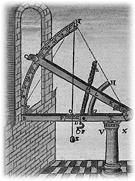
Learning About Satellites and Remote Sensing
Meteorological satellites (or more broadly, environmental satellites) have been around for 40 years. Imagery from satellites are standard fare for television weathercasts and are familiar to most everyone. But do you understand how they really work and the significance of what your are seeing?
Satellite pictures taken in visible light are the easiest to understand on a basic level, as it is what we are familiar with in our everyday experience. Reflection of light from clouds or other objects and surfaces reflects back to our eyes or a camera. The reflection of light makes the object visible. Exceptions would be self-luminous objects, such as the sun or a light bulb, which do not depend on reflected light.
But visible light is only one type
of electromagnetic radiation. The infrared region of the spectrum is where objects and gases of "normal" temperatures usually radiate
most strongly. Sensors aboard the satellites provide images in this and other
portions of the electromagnetic spectrum, as well.
objects and gases of "normal" temperatures usually radiate
most strongly. Sensors aboard the satellites provide images in this and other
portions of the electromagnetic spectrum, as well.
Below are links to a variety of resources on the Internet to help the user learn the basics of the electromagnetic spectrum, satellite remote sensing, some specific applications and explanations of how some satellites work. No attempt is made here to include the breadth of remote sensing or to provide links to the many Internet sources of satellite imagery. With the ever-changing content of the Internet and World Wide Web, no list will ever be complete! If you have found other resources that would be appropriate, please contact us at the Email address below.
Click here for the "Homework Helper" -- links of particular interest for those middle and high school papers and projects!
Learning is a treasure that
will follow its owner everywhere. Chinese proverb. |
-
The Remote Sensing Tutorial, Dr. Nicholas M. Short. Covers the basics, a broad range of satellites and many applications.
-
COMET Satellite Meteorology Course. Satellite remote sensing fundamentals aimed at university/professional level. A COMET (Cooperative Program for Operational Meteorology, Education and Training) presentation.
-
Basics of Remote Sensing from Satellite. An introduction prepared by NOAA/NESDIS/Office of Research Applications, emphasizing the NOAA GOES satellite imagery.
-
Remote Sensing. A University of Illinois WW2010 project. Includes a module on the NOAA GOES and polar orbiting satellites, how they work and how to interpret the images. Also a radar module.
-
Studying the Environment from Space, a NASA SEES project. Covers the basics, some satellites and related applications.
-
From a Distance - An Introduction to Remote Sensing, lesson plans and links to resources for teachers. A NASA learning technologies project.
-
Canada Centre for Remote Sensing. Fundamentals aimed at senior high school or early university level. Also has remote sensing glossary, examples and special emphasis on Radarsat.
-
The Remote Sensing Core Curriculum.(not working)An introduction to remote sensing, including aerial photo interpretation, exercises, lesson plans and items of particular interest to teachers.
-
Remote Sensing Glossary, from the U.S. Geological Survey
-
Looking at Earth from Space, glossary for satellites and remote sensing from NASA.
-
Remote Sensing Lecture Materials. R. Douglas Ramsey, Utah State University. Class lecture outline and sample images, oriented towards land resource satellites such as Landsat.
-
"IMAGE-IN" --(not working) Imagery for Meteorological Applications and Geophysical Education on the Internet. A web-based satellite imagery interpretation course, from the Florida State University Meteorology Department.
-
Tutorials on Remote Sensing on the Oceans. Institute of Marine and Coastal Sciences, Rutgers University. One page tutorials on the fundamentals of satellite remote sensing, with additional links on each page to further discussions of the topic.
-
Weather Satellites. A brief overview of the NOAA GOES and polar orbiting weather satellites, imagery and applications prepared by the University of Wisconsin-Stout Physics Department to supplement meteorology coursework.
-
Weather Satellite Guide. A brief, historical summary of each of the weather satellites launched by the United States since 1960. Florida State University.
Some other links that have lists of on-line tutorials and training materials include the NOAA/NESDIS/ORA Forecast Products Development Team, COMET "Virtual Classroom." (not working)
[NOTICE: When following any of the links listed above, you will leave the NOAASIS web site and NOAA domain unless a site is specifically noted as being associated with NOAA. We provide these links since the information may be of interest to our users. However, NOAA does not necessarily endorse the content of any of these sites.]
| Site
Map | Contact Us Phone: 301-763-8051 Fax: 301-763-8131 US Department of Commerce - NOAA - NESDIS |
Our
Mailing Address: Satellite Services Division Direct Services Branch, E/SP2 5200 Auth Road Camp Springs, MD 20746 USA |